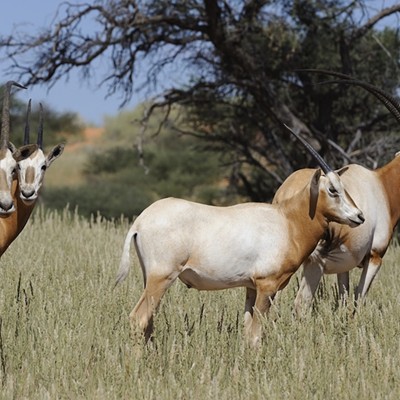What do Lindane and a demoted planet have in common? They're out!
Many scientists, opinion columnists, and concerned members of the public have been on a rampage in recent weeks in response to the planet-formerly-known-as-Pluto’s demotion from planet to the less-sexy category of “dwarf planet” within the family of extraterrestrial items known as “trans-Neptunian objects.”“It’s a sad day for humanity,” moaned one columnist, who went on to pull mercilessly at heartstrings by describing the shock of Patricia Tombaugh, the widow of Clyde Tombaugh, Pluto’s discoverer.
Pluto, meanwhile, remains a distant and somewhat round body of rock and ice at the outer edge of our solar system. Its reclassification didn’t change a thing.
Still, all this hubbub about Pluto’s new status has compelled me to ponder other erroneous, suspicious, and retracted categorizations closer to home. And, as this is a food column, I’ve limited my ponderings to categorizations of the culinary persuasion. After mulling over my list, I have chosen winners in three categories.
In the perpetually miscategorized and barely more relevant than the demotion of Pluto category, the winner is a tie between all the fruits that people usually call vegetables, like cucumber, squash, eggplant, and pepper. I don’t know about you, but the last time I made baba ghanoush and called it fruit salad, I got laughed out of the potluck. For the record: A fruit, according to botanists, is the enlarged, seed-containing ovary of a flowering plant.
In the extremely relevant but sadly obscure re-categorization category, the winner by a landslide is the recent removal of Lindane from the EPA’s list of approved chemicals. Lindane was one of the last holdouts from the DDT era of the 1950s, and is chemically similar to DDT. Already banned in 52 countries, Lindane managed to hold on for years in the United States as an insecticide used to treat the seeds of wheat, corn, oats, rye, barley, and sorghum. It’s also used in shampoos to treat head lice — the Los Angeles County Sanitation District estimates that one head-scrubbing-worth of Lindane-containing shampoo can contaminate 6 million gallons of drinking water to unacceptable standards.
But most Lindane contamination comes from its agricultural applications, and this contamination has proven to persist in the environment for long periods of time. Lindane is found in especially high concentrations near the Poles. It’s the most abundant pesticide found in Arctic air and water, where it poses a huge threat to indigenous hunter populations by finding its way into the fat of fish and mammals.
While the internet is full of news and discussions about the reclassification of Pluto, you’ll find nary a trace about the banishment of Lindane — though you will find some offshore pharmacies that will still sell it to you. Instead of whining about poor Pluto, how about cheering for the demotion of Lindane?
And finally, in the totally confusing and mildly interesting re-categorization category, we have the ever-shifting USDA Food Pyramid’s removal of eggs from the category formerly known as dairy. I haven’t been able to determine when eggs were decoupled from milk products, but they remain embedded together in the general public’s perception of dairy. The only common ground I’ve been able to come up with that links eggs and milk is that both are animal products that don’t come at the expense of the animal’s life, and they are both related to maternal physiological processes. Eggs are analogous to human menstrual product (in the case of the more- common unfertilized eggs) or human fetal tissue (in the case of fertilized eggs), while milk, of course, comes from mammary glands. Both, incidentally, come from highly sexually charged parts of the body. But if that was the distinction behind the coupling of milk and eggs under dairy, I can think of some other substances, arguably edible, that could be added to that category. Luckily, I don’t have to, because the Food Pyramid has been changed.
Now, you can find eggs grouped into the “meat and bean” category. Some milk products, namely butter, are now in the entirely new category of “oils,” while the rest of the milk products have found a home in the newly defined “milk” category. Fruits and vegetables, meanwhile, which used to share a category, have been decoupled — with peppers, eggplants, zucchini, and cucumbers grouped with the vegetables, as usual, and not with the fruits, where they belong in terms of plant taxonomy.
But, as beauty resides in the eye of the beholder, categorization is in the eye of the categorizer. The USDA-Pyramid builders aren’t interested in plant taxonomy, they’re concerned with human nutrition, and in that context, grouping protein-rich eggs with beans and meat makes sense. And if a bunch of scientists in the International Astronomical Union need to call Pluto a dwarf planet in order to streamline their current view of the solar system, why should the Pluto-huggers care?
As for Lindane, good riddance.
And for anyone who longs for the days when chickens’ menstrual product commingled with the mammary secretions of bovines … let them drink eggnog.















